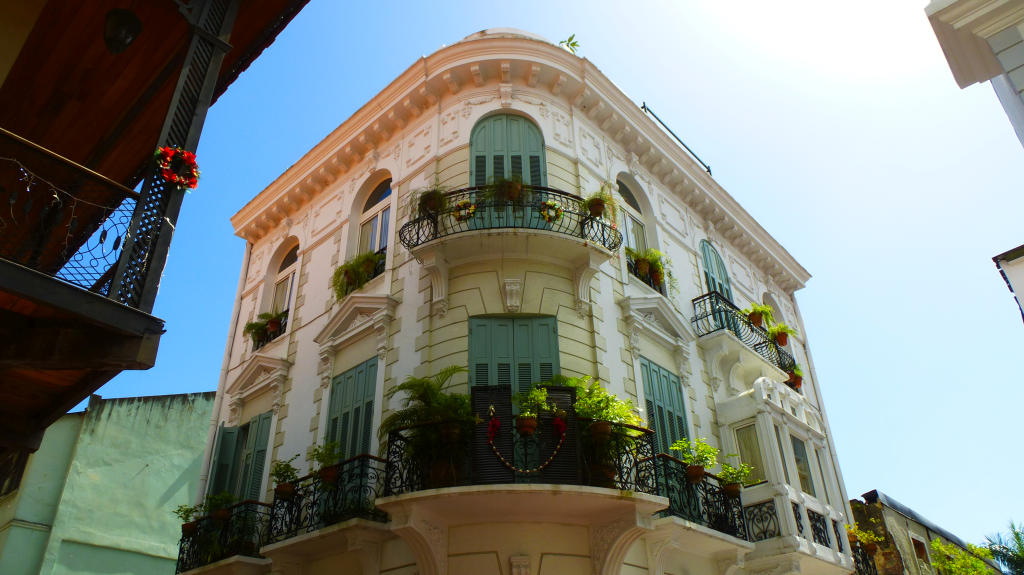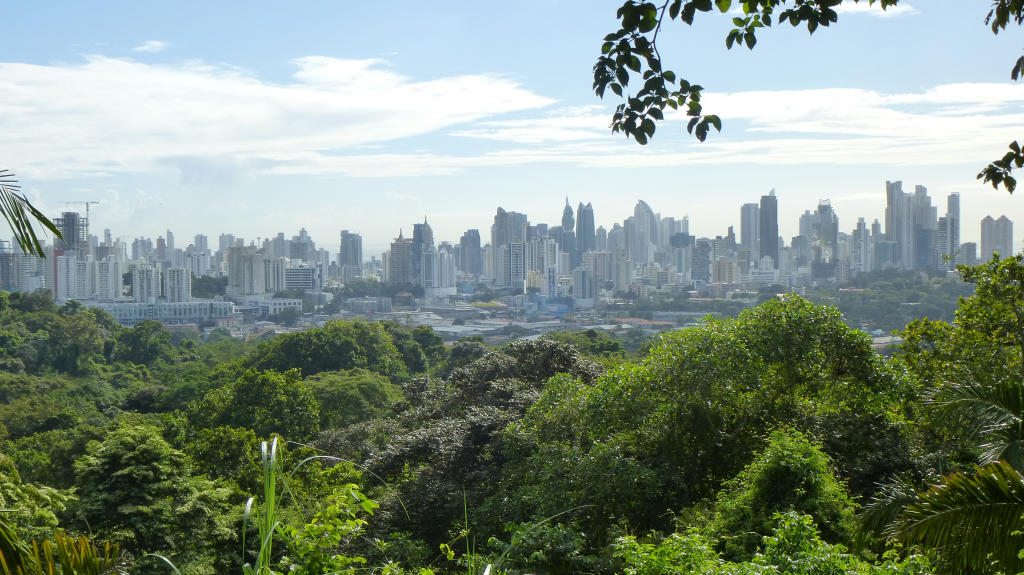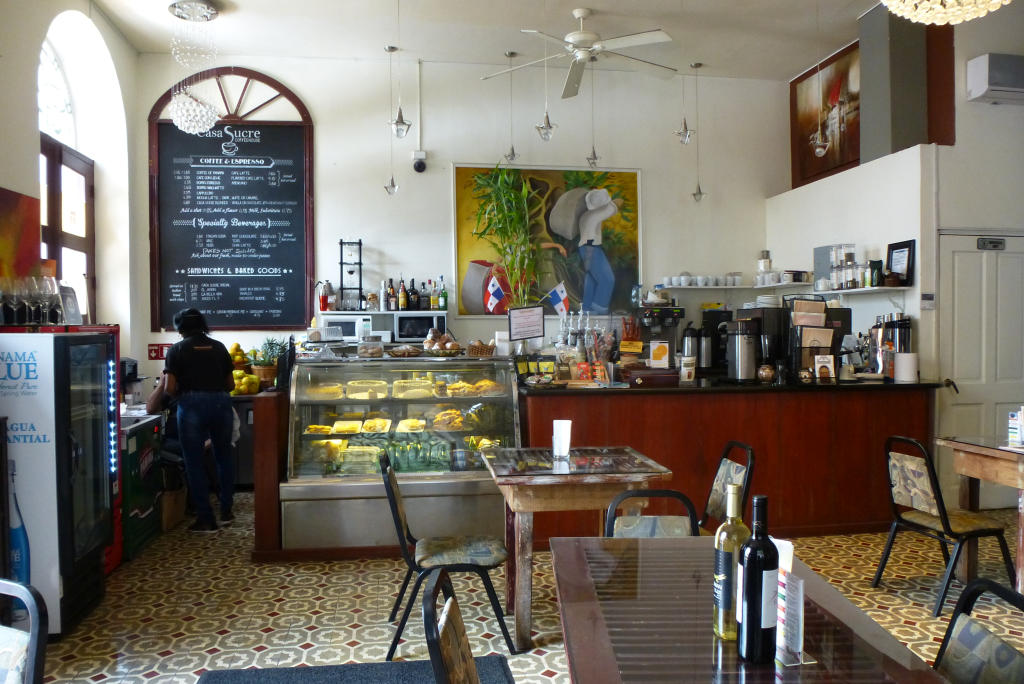Panama City, Panama
I started out on this trip with no expectations, only really wanting to escape to a warm place and away from the huge political changes happening in the United States. I decided to begin in Panama because that’s where a good friend of mine was from (and also visiting for his Christmas vacation). I wanted to work my way up through Central America and figured it would be nice to begin in a place where there was at least one friendly person.
I ended up really liking Panama City. Granted I mostly stayed in the touristy area, the old city area called Casco Viejo. My excursions into the main city reminded me a lot of my home city of Bombay, except with way less pollution. The entire population of Panama is around 3.5 million, a tiny fraction of the 10+ million people in Bombay!
GETTING THERE
Panama City is quite far from the airport, so you have to take a $35 taxi. There is a bus but it is a little complicated to find it and take it, especially for a non-Spanish speaker. Some hotels offer a cheaper shuttle back to the airport. Taking Uber can lower the cost a bit too.
My taxi driver to the city was very interesting. He was a Venezuelan computer scientist and college professor who had escaped from there with his family. The things he told me about Venezuela and how bad things are getting there were really saddening. I don’t think most of us can fathom what it’s like to live in a fairly stable prosperous country most of our lives and then abruptly have to leave and become a refugee in another country later in life.
CASCO VIEJO
I spent a day wandering around Casco Viejo. This was my first time seeing beautiful Colonial architecture with its bright colors, flat roofs and heavy dark wood doors. You can climb to some elevation at the easternmost tip of the area and get a great view of the Pacific Ocean and the modern city skyline across the bay. If you wander a little by the water, you can find some spots where you have the modern city on your left and the contrasting old city to your right. It’s quite a delightful contrast. And if you let yourself reflect on it, quite a bit sobering looking at the shiny skyscrapers towering tall amidst quite a bit of poverty.
A lot of the new looking buildings in Casco Viejo are buildings that have been restored with the colonial facade intact. There still exist old buildings with their original inhabitants so you get to observe the contrast between their lives and that of the shiny touristy places of businesses too. Even more sobering is to look at the old buildings and see the bullet holes, back from the US invasion of Panama in 1989.
PARQUE NATURAL METROPOLITANO
Another day, I took a taxi to Parque Natural Metropolitano to hike a little bit in a rainforest (it is called the “lung of the city”). I walked on a few trails and climbed all the way to the top of one to be rewarded with a great view of the city. I didn’t see too many birds and animals but I did get to see a monkey, a sloth, some turtles in a pond and this delightful lizard that ran all the way across the water. It is called a Jesus Lizard, for obvious reasons. :)
PANAMA CANAL
Of course, the highlight of the trip was seeing the Panama Canal! I remember reading about the canal when I was a little kid in history books. Never did I imagine that I would see it with my own two eyes someday. :D I timed it well and got to see a freight ship passing through the canal. Seeing all the throngs of people standing on the balconies waving at the ship going by felt like it might have been the exact same scene a hundred years ago when the canal first opened, except people would be dressed differently and the ships would be less technologically advanced.
The three locks that control the ship’s passage through the canal are designed to use gravity, making it a very simple, elegant design – especially impressive given that it was designed a hundred years ago! The Atlantic Ocean and the Pacific Ocean are at different heights, so the locks are necessary to lift or lower the ship as it passes from one ocean to another.
The Panama Canal was voted to be one of the wonders of the modern world, so I would highly recommend taking the opportunity to go see it. It is quite something to witness human ingenuity and a pinnacle of engineering.
To get here, I just took a cab from Casco Viejo to Miraflores Locks, which dropped me off at a big building, which had four floors. The second floor reportedly has a restaurant with a buffet where you can eat delicious food and watch the ships go by. The fourth floor has the public deck to observe the ship, which is where I spent most of my time. The ground floor has an exhibition hall, which I missed because I ran out of time, and a small movie theater where they showed a ten minute clip outlining the history of the canal. I would not miss this movie. I especially loved seeing how the Panamanians built a third passage for bigger ships earlier this year (the original canal was built by the United States and owned and operated by them until it was finally handed over to Panamanian control).
FOOD AND DRINK
Some places I went to for food and drink that were relatively inexpensive and good quality:
Casa Sucre – This became my regular haunt because of their outstanding coffee, sweet and friendly baristas, and breakfast offerings. You pay US prices but for me that was fine at the time. The sell breakfast quiches as well as empanadas and tamales. [link]
Restaurant Saquella – I got a pretty good chicken and pesto sandwich here. [link]
Cafe Coca Cola – This restaurant is on the border of Casco Viejo and the “Not Safe” area. I would go here in daytime or in a group at nighttime. The locals eat here so the food is good quality and cheap. They say that Che Guevara ate here once. [link]
Saquella, Espresso Club, Multiplaza – I needed to get to a mall (yuck!) to run an errand. I got some delicious coffee and cake at this place. [link]
Las Tinajas – This is in the city centre. I went here with my friend for dinner and a cultural show that showcased local dancers wearing beautiful clothes. [link]
Wherever you end up at, make sure to try the ceviche, empanadas, fresh fruit juices, coffee and flan. :)
Some observations and tips about traveling in Panama City for new travelers:
- People are really sweet and friendly. As in every non-English speaking country, try to make an effort to learn a little bit of Spanish. Folks really appreciate that you make the effort. They themselves try their best to use what little English they know, so it’s only fair that you make the same effort.
- The tap water is safe to drink.
- The electrical power outlets are the same as in the US, so no adapter is needed.
- Taxis are pretty cheap. I paid around $3-$4 whenever I needed to get to a different part of the city.
- Uber is very popular here. There is even an “Uber English” filter so you can get an English speaking driver, although you have to wait longer to get one. I found that even the ones not marked Uber English still spoke enough English to be able to navigate around. I took Uber when I had access to wifi and taxis when I didn’t (anywhere public away from my hotel).
- The hostel I stayed at – the Magnolia Inn – was lovely, with very clean dorms and facilities, good wifi, friendly English speaking front desk staff etc. They rent private rooms too if you’re not the hostel type. I would highly recommend staying with them.
- The Casco Viejo area has a shaded covered pathway where local artisans sell really neat art, which could make for great gifts. They are all made my local indigenous artists. The prices might be a few dollars higher because it’s a touristy area but even so they are pretty good prices. I especially recommend getting a “mola”, a cloth “painting” that is made by layering different colored fabric and skillfully cutting each of them to create an image, usually of birds, fish or animals found in the San Blas islands. These can legally only be purchased in Panama so you will get something truly unique while supporting the women who make them.
- The President of Panama lives in this area so it’s heavily guarded, making it a bit safer.
- Everything in Casco Viejo is US prices. It is cheaper if you get out of the area and go to where the locals are but this does require some knowledge of Spanish. You might also want to be extra careful at night because the areas surrounding Casco Viejo are marked “not safe” for tourists, supposedly because they are high in criminal activity.
- Do not be fearful – this is a pretty safe country in general, at least during the day. There are areas that tourists should not go to but in general, most areas where you are likely to visit are just fine. Just use your common sense and don’t do foolish things that you wouldn’t do at home, like flash around a ton of money, stand out in expensive clothes and jewelry, walk done dark, deserted alleys etc.
Things that I would have done in Panama if I had been more organized and had more time:
- Taken a trip to the San Blas islands. This is a couple of hours’ trip in a 4X4 to a boat which takes you to the islands populated by the Guna Yala (the Indian tribes in this area). A few of the 300+ islands are available for tourists to visit. I heard mixed things about them from other travelers. Some people thought they were boring because there was “nothing to do”. Others loved them because there was nothing to do and you could just sit on the white sand beaches and look out at the water and relax. You can even take a boat to San Blas, then all the way to Colombia!
- Taken a walk on the Amador Causeway, a long strip of land that connects Panama City to some islands where you can go get food. I kept meaning to go here but it never happened.
- Visited the fish market very close to Casco Viejo where you can get fresh fish caught from the waters nearby. I did eat ceviche in a different part of the city but I wish I had gotten it here.
- Hired a guide to go birding with (or done a self-guided tour). Panama has a ton of beautiful flora and fauna and amazingly colorful birds. This is something I’d like to do another time.



























Great info! I love the “wish I had done…” list—that’s a great idea. One typo: the US/Panama conflict was in 1989, not 1999. Keep ’em coming!
Good catch, fixed it! I’m guessing you did most of the stuff on the list? :)